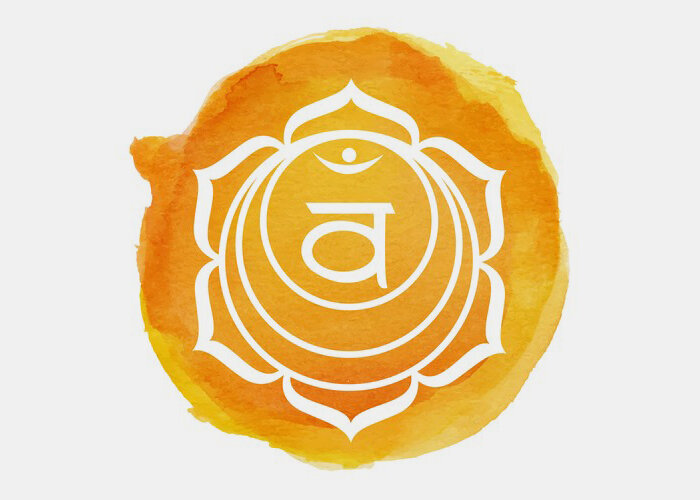How To Do The Sacral Chakra Meditation- Purifying The Swadhistana
How To Do The Sacral Chakra Meditation– Purifying the Swadhistana? Simple way is take a deep breath & established a regular pattern, Visualize orange color, Chant Vam beej mantra of Swadhistana. Since the Vedas were written between 1500 BCE and 500 BCE, they are the oldest source of information about chakras. The second of the seven major chakras is the sacral chakra, also known as the sex chakra. The chakras are located in the lower back, just below the navel or belly button, surrounding the lumbar spine.
It’s a symbol of sensuality and imagination. This chakra is known as the Swadhisthana Chakra in Sanskrit, which combines the Sanskrit words for “self” (Swa) and “settled” (Adhishthana). The sacral chakra follows the root and precedes the solar plexus chakra, heart chakra, throat chakra, third eye chakra, and crown chakra.
Chakra refers to an energetic “spinning wheel” that spans the length of the spine, from the tailbone to the crown of the head. Various parts of the human body correspond to different types of energy transducers. In the 1880s, tantric yoga traditions brought concepts of the seven chakras to the Western world, and they are still being researched today.
The Sacral Chakra’s Purpose
Sacral Chakra Meditation is linked to pleasure, sexuality, and joy. Many of the body’s fluids, including the genital organs, the bladder, and the kidney, are controlled by this chakra.
Meditation, asanas, and pranayama may awaken the latent Kundalini energy found at the base of the spine. The sacral chakra provides a sense of vitality, stimulation, and self-assurance. Having a well-functioning sacral chakra Meditation is essential for promoting sexuality, creativity, and a wide range of positive emotions.
The sacral chakra is linked to one’s connections. Intimate relationships and appropriate boundaries may be supported by this tool. Restoring harmony to the sacral chakra is necessary for reestablishing balance in personal relationships.
A person’s physical health, mental well-being, and overall well-being may be harmed by blocked chakra energy. The sacral chakra Meditation may be out of balance if one experiences any of the following undesirable attributes.
Sacral Chakra Exercises to Maintain Harmony
The sacral chakra Meditation may be opened and balanced via various methods. Healing activities for your second chakra might get you back into balance today.
Meditation
When you meditate with the water element in mind, you may achieve emotional harmony in your body and mind. You may activate the sacral chakra Meditation via the use of the following two chakra meditation techniques:
Meditation with imagery
Sit comfortable and take a few deep breaths. Keep your attention on your breathing until you’ve established a regular pattern. Visualize the color orange as soon as you have found this concentration. The sacral chakra Meditation is a good place to put the color emphasis. A tranquil body of water, such as the ocean or a lake, with a clear open sky, might be an alternate depiction. Keep going for a few more minutes.
Meditation by chanting
Close your eyes and relax in a reclining posture. Inhale and exhale through your navel and visualize a flat, white moon stretching from your knees. Repeat the word vam as a mantra. It’s entirely up to you how long you want to spend meditating.
Oils of the Orient
An unbalanced sacral chakra Meditation may be healed using certain essential oils. You may use them straight to the skin, or they can be diluted and added to a bath. Here are a few of the most often used essential oils for enhancing sacral chakra Meditation.
Affirmations
By writing them down or expressing them aloud, You may practice affirmations in various ways. Here are some claims to help you mend old habits and awaken your sacral chakra.
Poses in yoga
It is possible to open the Svadhisthana chakra by practicing various asanas. Here are three yoga postures that will assist the second chakra is flowing freely:
The Goddess Pose
Procedure to goddess pose: Open your feet wide and turn them outward to begin. Bring your thighs parallel to the ground by bending your knees. Your knees above your feet. Join your hands of your heart and lengthen your back. Hold the pose for a few before moving on to the next one.
Bound Angle Pose in a reclining position.
Bring the soles of your feet together and let your knees fall toward the floor as you lay down on your yoga mat. Feel the expansion of your abdomen as you inhale and exhale with your hands on it. Inspire yourself with a feeling of openness and enthusiasm, and take this energy with you throughout the day.
Compulsive Acts and Habits
If you’ve ever been addicted, you’ve got a sacral chakra blockage. You may enjoy joy and pleasure without the need to be continually satiated by the sacral chakra associated with this area. An overactive Svadhisthana is often associated with an overwhelming yearning for happiness.
Lack of Satisfaction
The word “svadhisthana” means “joy and pleasure” in Sanskrit. We feel this way when we’re on a route that’s meaningful to us. When our lives are in harmony, we may even learn to enjoy the discomfort of suffering since the trials we face bring us so much joy. When our lives aren’t gratifying, we turn to other types of happiness and enjoyment to fill the void.

